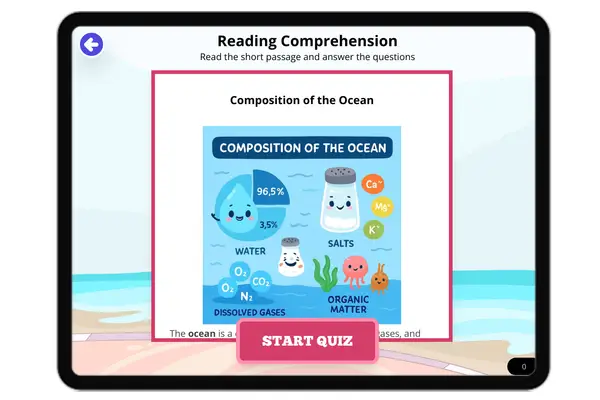The Great Pacific Garbage Patch — Passage
The Great Pacific Garbage Patch is a massive collection of floating plastic waste located in the North Pacific Ocean. It is estimated to cover an area of 1.6 million square kilometers (620,000 square miles), roughly three times the size of France.
The garbage patch is formed by ocean currents that trap debris in a circular pattern called the North Pacific Gyre. Most of the waste is plastic, including bottles, bags, and microplastics (tiny plastic particles). These materials do not biodegrade but instead break into smaller pieces, harming marine life.
Marine animals, such as turtles and seabirds, often mistake plastic for food, leading to injury or death. Microplastics also enter the food chain, potentially affecting human health.
Efforts to clean up the garbage patch are challenging due to its size and the tiny size of microplastics. Organizations like The Ocean Cleanup are developing technologies to remove plastic waste, but prevention—such as reducing single-use plastics and improving recycling—is key to solving the problem.
Fun fact: Scientists estimate that the Great Pacific Garbage Patch contains over 1.8 trillion pieces of plastic, weighing about 80,000 tons—equivalent to 500 jumbo jets!
What is the Great Pacific Garbage Patch?
A natural island in the Pacific OceanA collection of floating plastic wasteA type of coral reefA region with no marine lifeHow big is the Great Pacific Garbage Patch?
The size of a small cityThree times the size of FranceSmaller than a football fieldThe size of the Atlantic OceanWhat is the North Pacific Gyre?
A type of marine animalA circular ocean current that traps debrisA deep ocean trenchA type of plasticWhat is the main type of waste in the garbage patch?
MetalGlassPlasticPaperHow does plastic harm marine life?
It provides food for animalsAnimals mistake it for food, leading to injury or deathIt improves water qualityIt creates habitats for fishWhat is one challenge of cleaning up the garbage patch?
The waste is too largeThe tiny size of microplasticsThe lack of ocean currentsThe absence of plasticWhat is the fun fact mentioned in the passage?
The garbage patch contains over 1.8 trillion pieces of plasticThe garbage patch is smaller than a cityThe garbage patch is made of metalThe garbage patch has no effect on marine lifeWhat is one way to prevent the garbage patch from growing?
Increase single-use plasticsReduce single-use plastics and improve recyclingDump more waste into the oceanIgnore the problem


















